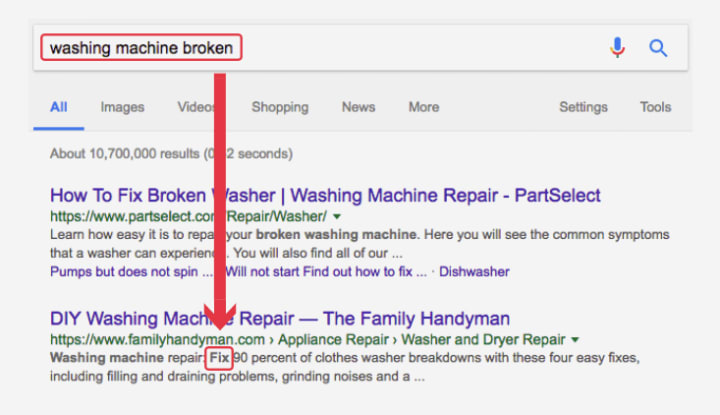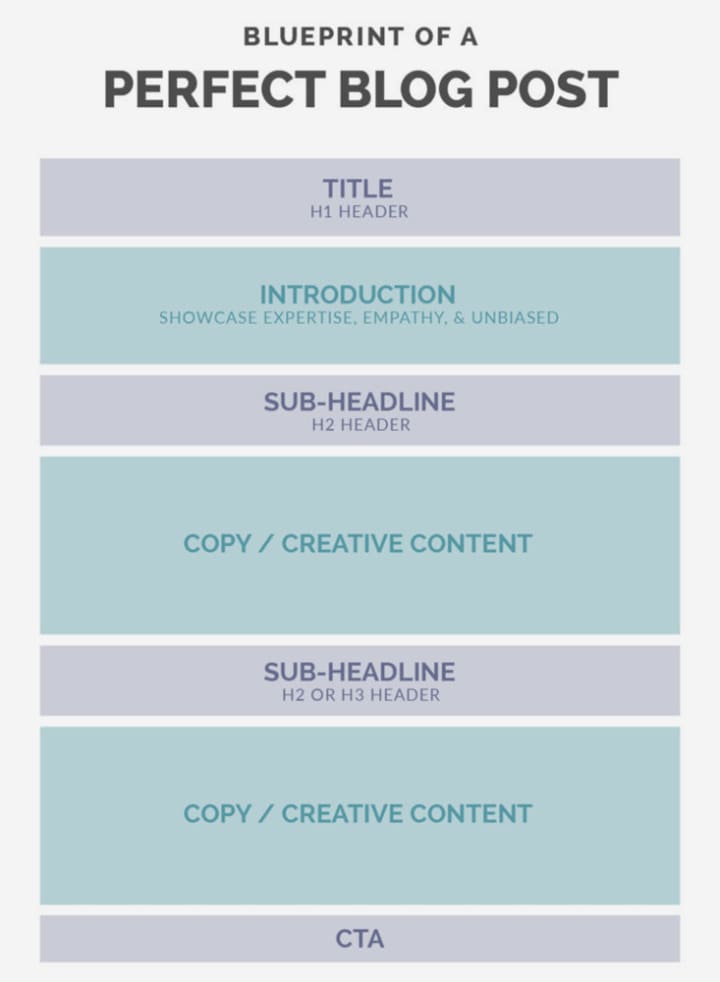Tips on How to Write SEO Content
Do you want to know how to write SEO content? We have created this guide to help you with the best SEO practices to increase the rankings and traffic of your website.

A website without optimized content is like an empty shell. Content is what makes the website and drives traffic towards it.
SEO friendly content is what determines which queries and keywords your site will rank on the search engine. There is no option to have poor content on your website.
We have created this guide, "How to Write SEO Content," to help you know the crucial points to be included for writing web content that:
- Your target audience is looking for
- Search engines can find
- People can understand with ease
Content Writing Best Practices
Let’s delve into the best practices of how to write SEO content.
Topic Research
Topic research is something that helps Google to interpret search queries. The Hummingbird update has changed the SERPs to a great extent. This is what Danny Sullivan has explained.
"Hummingbird is considering each word in the query as a whole. Every word is taken into account. Pages matching the meaning rank better than pages matching only a few words. "
As you can see in the image below, the highlighted word ‘fix’ is not present in the query. This means that Google interprets the search intent, matching the query’s meaning.

Keyword analysis is a challenge you will face while writing SEO content for your website.
Apart from keyword analysis, taking a closer look at competitors’ practices is crucial. Consider their best practices that dominate the SERPs.
As you can see below, similarities in the query “best city bike” include:
List numbers, and adding a year to the post.

Also, Google considers identical words that may be useful to the target audience like “best urban bikes” and “best commuter bikes.”
Tools to use—On-page SEO checker
Never Stuff Keywords
Keywords make your content search-friendly, relevant, and readable. When you start stuffing keywords in the content, it does the opposite for your website.
A web page stuffed with keywords looks deceitful to the search engines, and it can drastically drop your rankings. Readers may consider it as a low-quality page and will bounce back. It will increase your website’s bounce rate, which will not look good to the search engines. Thus, the search engines also consider your domain as untrustworthy.
Search engines are smart. You do not have to use the grammatically incorrect keyword, your target audience uses. Search engines understand what your page is all about.
Snippets
If you were successful in getting your website on the first few searches of Google for a keyword, there is still a catch. Some other website might have taken over the first screen of the website, that appears right below the search query.
This is the featured snippet, which is also known as zero position and is the box right below the query, as you can see in the image below.

How to optimize your content for the featured snippet?
- Analyze your pages that rank in the top 10
- Target question keywords and provide an answer
- Use header tags properly
Mobile-Exclusive Keywords
Creating content as per mobile requirements is crucial because people are more accessing the web from mobile phones than desktops.

You are losing on a lot if you are not paying attention to the mobile user’s needs and solutions. Let’s consider a few examples of how you can consider a mobile-friendly approach:
Search Intent
The search ‘how to repair a tire’ does not have the same intent when searched from desktop and mobile. When searched from the latter device, it means that the person is looking for urgent help.
If you have content on your website covering this topic, then consider the device from where you are getting the traffic.
Mobile Search Volume
When you scrutinize the popularity of a keyword, you may only check the desktop volume. As you can see in the image below, the search volume for the keyword ‘how to tie a tie video’ is almost 50% more in mobile than on desktop.

Who Are You Writing For
This is very important to consider and often missed by many marketers while writing content for SEO. Structure your language, tone, and content as per your target audience. Set a proper reading language for the readers.
Provide Value
Always write content that offers value to your readers like ideas or actionable tips. If you want the readers to keep coming back to your website, give them a gift at the end. This can be anything like a free webinar or worksheets.
Giving them a valuable takeaway will help you generate more views because the readers will also recommend your site to their loved ones.
Right Spelling, Grammar, and Punctuation
A well-written copy says you write quality content and can be trusted. On the other hand, a low-quality copy says that you are negligent and can’t be trusted.
Your content is the foundation of communication. Ensure it is clear and high quality with the right spelling, grammar, and punctuation. If you have a weak hand at it, hire an editor to review the content before putting up on the website.
Long-Form Content
Long format articles work better in search and also get more backlinks. Apart from this, it is more likely to get shared on social media.
This does not mean that short content is not appreciated, but it is as long as you have an appropriate mix of long-form as well on your website. A blog post has to be a minimum of 500 words, but 1000 words is better.
Backlinko stated that the average top result in the correlation between Google rankings and the content word count is 1890 words.
Right Formatting
People usually give a glance through the content rather than reading every word of it. It is wise to use short sentences and paragraphs. Using bullet points is better.
Also, use images and calls to action to make the posts visually appealing and inviting the readers what to do next. Below mentioned is an ideal format for writing a blog post.

Hyperlink Sources
If you are stating information taken from another website, ensure to give it a hyperlink. This is one way crediting the site for the content provided.
If you feel hyperlinking will send traffic to another website, hyperlink sources and you always have an option to open source in a new tab.
Use Active Voice
The content should be simple, understandable, direct, and powerful. Try to use active voice sentences as much as possible. Do not interchange the subject and the object in the sentence.
Passive sentences do not sound as exciting as active voice and sometimes also do not make the required impact on the reader.
Links at the Right Places
Backlinks are signals to the search engines that your content is trustworthy. Links show a relation between your site and other websites and also the relationship between the content pages on your website.
- For off-page links, make sure you link to relevant and trustworthy sources
- Open external links in a new tab, so that the readers do not exit your website, thus not affecting the bounce rate.
- The web post should contain internal links to relevant pages. These make the visitors explore your website.
Use anchor texts relevant to the website that explains in itself what the visitors will see when they click on it.
Images
Include related images into the content wherever possible. Studies have shown that images work better and posts get clicked more with images.
Quick Tips
- Use custom images as much as possible, because they haven’t appeared in the search before and add fresh visual content to your website.
- Always add alt text to your image, to help search engines crawl better.
- Use screenshots wherever possible, because it is an easy and effective way to represent the data visually.
- If you use images from a stock library, ensure to read the terms and conditions before using it to represent your content.
Check our latest blog on how to use images for link building.
Attractive Headline
A good headline is the one that includes keywords that users search for and also it should be in a simple and engaging language which makes people click on it.
Ensure that your keyword appears in the first 65 characters because Google only crawls the first 65 characters.
Effective CTA
Add a soft call-to-action at the end of the content. This organically fills the role of promotions. For example, ‘if you would like to know more about the service, contact our link experts.’

Don’t be Over-Promotional
Do not add too much promotional content in the post. You can mention the company name where it fits organically and is relevant.
Remember that the aim of the blog post should be to educate the readers and not promote your brand. A soft call to action is alright, but ensure you are not over promotional.
Simple Sentences
If you are writing a novel, it may be okay to end a paragraph with a pause. Writing for the web is different. You need to have shorter and simple sentences.
A five-line paragraph works, but a three-line one is even better. Some content writers even prefer writing a single line paragraph. Simple sentences help comprehend your message quickly.
Follow SEO Best Practices
Just using the keywords is not enough; you need to use them and their related phrases at the right place, which falls organically. You can use the keywords at places like URL, meta description, meta title, headers, and alt tags of images.
If you are using a WordPress website, Yoast is an excellent plugin to use that will help you with SEO. After you have the content in place, the Yoast SEO plugin will help you find out the errors and missing fields.
Update Posts
Content brings in a lot of value to your website. One can share it on social media, blogs can link it, and Google increases the page ranking as traffic boosts. While all this happens, content starts aging. Thus, there is nothing like ‘write and forget’.
To get the most value out of your content, watch carefully how it performs, and then update the content with fresh information to get new visitors.
Make it Shareable
Social media is a huge piece of the digital marketing puzzle. Building an audience on social media platforms can help send traffic to your website and also create a community of people interested in your content.
Tips for Writing Social Media Content :
- Give it an attractive headline
- Make it relevant to your target audience
- Use visuals like infographics and images
Keep Voice Search in Mind
One of the important considerations while writing content for SEO is keeping voice search in mind. Make sure how the content sounds because many people listen to the information on the go.
If the content is represented in a table, then it may not be suitable for voice search. Thus, if you want to make your content appear in the voice search, consider this point while writing.
Third-Party Links (Stats and Attribution)
Include verified stats from trustworthy third-party sources that support the point you make. Remember to use a primary source to link.
Ensure not to use Wikipedia as a source because it collects data from other sources.
Attribute all the sources in your content that may be challenged. For instance, if you write a sentence like ‘most marketers follow a specific exercise routine’, back it up with a source.
Attribute the following:
- Data and research findings
- Direct quotations
- Published opinions
Table of Contents for Quick Navigation
If your website is using sidebars and a lot of information, a table of contents is important. It helps the visitors to navigate quickly, without getting lost in the content jungle.
Conclusion
We hope to have helped you know in detail about how to write SEO content with the tips. If you have any questions, please feel free to leave us a comment or contact us.
About the Creator
MarCom Guys
Get the best in white label SEO with customized link building service packages as per your needs that help you achieve rankings, growth, and stability for your website.






Comments
There are no comments for this story
Be the first to respond and start the conversation.